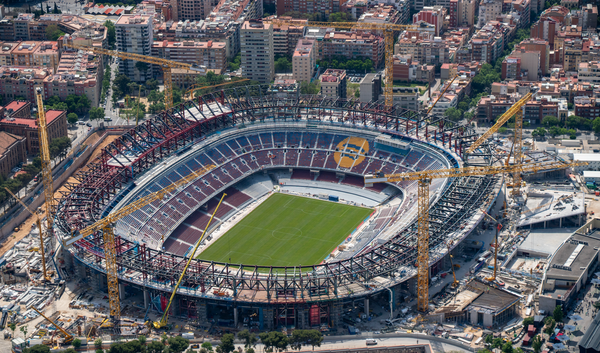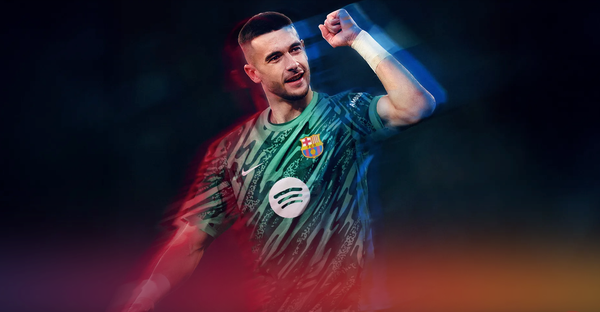Xavi's super squad: How will Barcelona's new signings affect their tactics?
Barca have made strategic bets in the transfer market, given their financial woes. Will they pay off for Xavi?
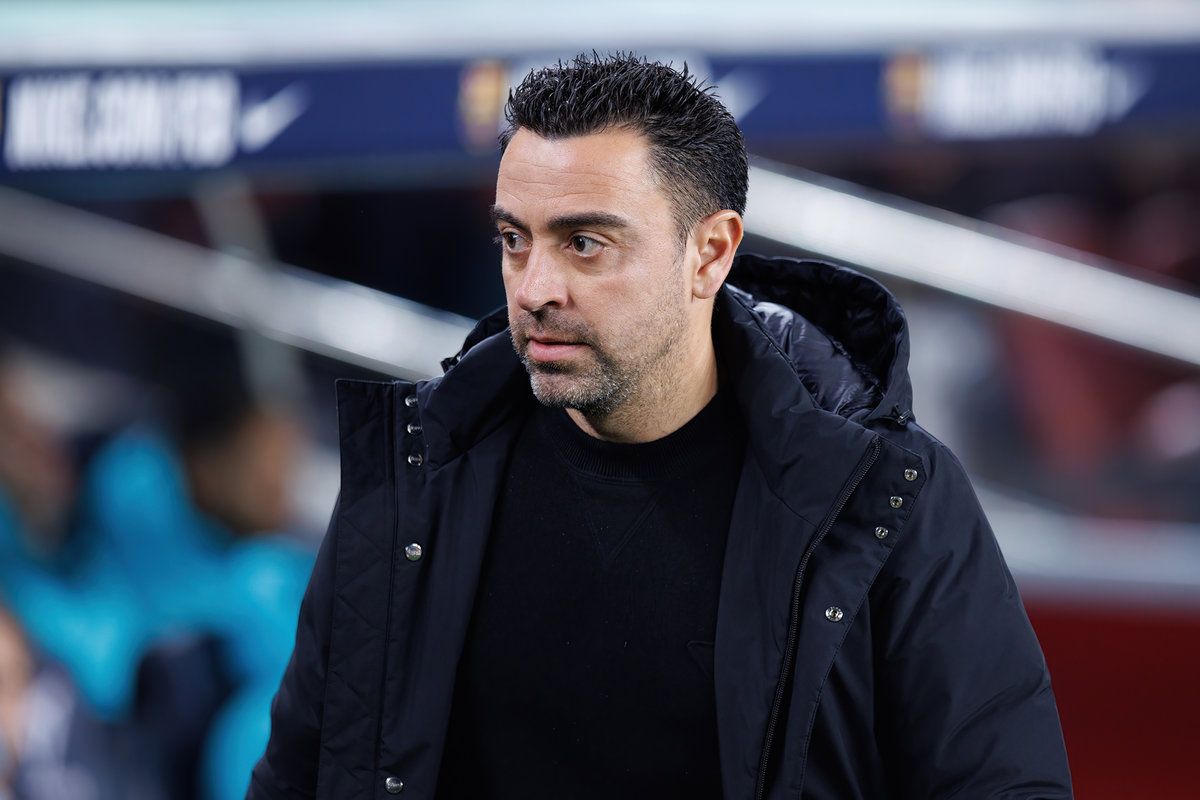
Barcelona have done a fantastic job during the summer transfer window for an undeniably broke team. In fact, to sign several elite players like Joao Felix, Joao Cancelo and Ilkay Gundogan for free and then spend as little as €3.4M on a fitting profile like Oriol Romeu borders on unbelievable. But here we are, approaching the end of September and Barcelona are getting into gear; the new arrivals are gelling well, the squad is bonding and Xavi's tactical ideas seem to be on the rise.
But what exactly should we expect from the team moving forward? Will the new signings bring about a change in tactics, too? If so, how?
The squad
Barcelona's current squad is oozing with quality. When you compare the very best teams on the planet to the one Xavi has at his disposal, there's not much separating them; Barcelona's technical levels are off the charts, the youth have sky-shattering potential and there is a healthy mix of talent and experience. The depth is solid too, albeit still lacking in certain areas. But even that is sufficient for now.
Looking at the players below, we can see where this depth might falter and where it is at its best.
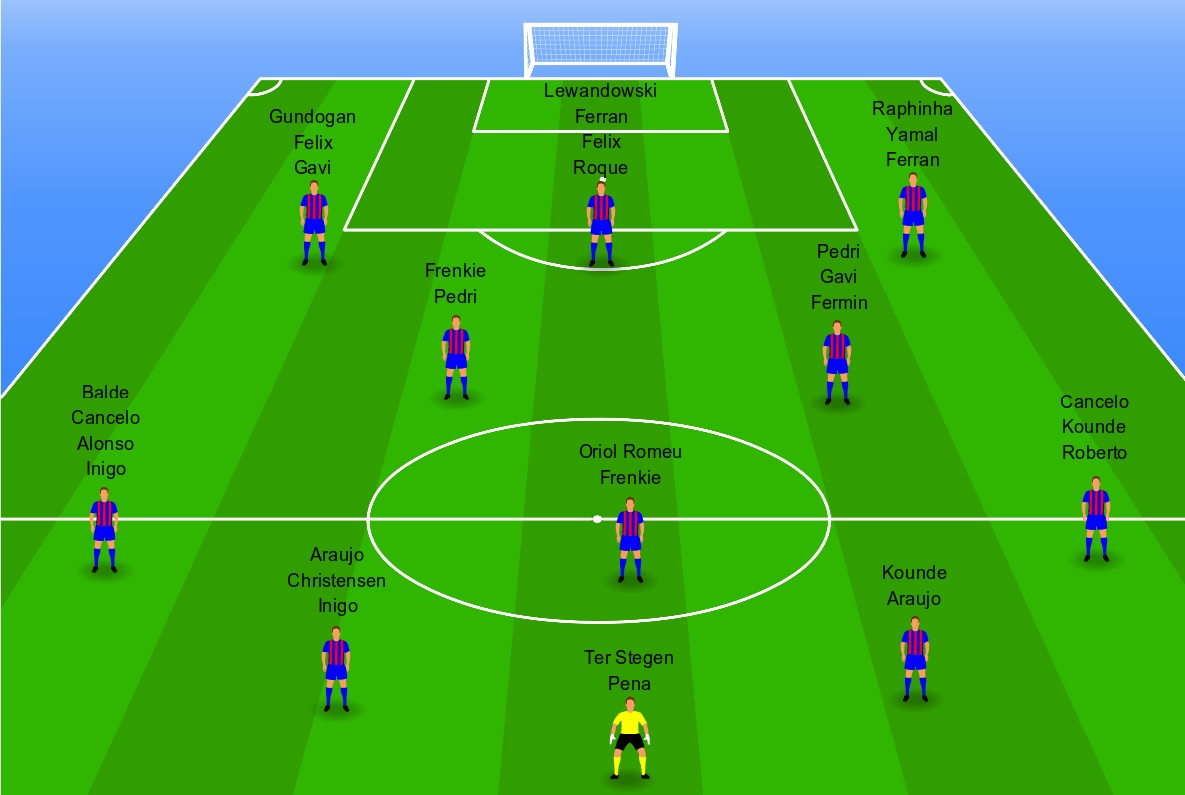
One thing to note is that this setup doesn't consider every scenario out there. Players like Gundogan are a cheat code because you could theoretically play them everywhere; he's a midfielder, sure, but can play in every role in midfield as well as on the flanks and as a false 9. There is almost no limit to what he can do on the pitch. Similarly, several rotations can happen in that midfield line and many depend on the structure itself.
If Xavi uses a box, we might get an additional midfielder and then that box can vary too; is it a box created by the LW inverting or is it a CB stepping up? Depending on the answer to that question, you can have Gundogan or Gavi manning the left flank or Frenkie de Jong starting in the left centre-back role. So there are certainly more options possible than pictured above. But that's the general outlook of the team nonetheless.
All in all, the depth is good; Barcelona are (mostly) well covered across the board and would need a couple more quality depth signings to finish the jigsaw. The fact remains they are a couple of injuries or absences away from a Marcos Alonso-Sergi Roberto full-back tandem, which can have its uses but is still far from ideal. Similarly, apart from Romeu, Barcelona don't have a proper defensive midfielder to play as a lone number 6.
Once those issues are resolved, they should be good to go.
The backline
Even though up until very recently, Barcelona were shaky in the backline, the first phase of their build-up play was always the most stable one. The reason behind that is the fact most of Xavi's non-negotiables - or aspects he never compromises on regardless of the circumstances - are to be found in that phase. We have discussed that in depth in our pre-season tactical analysis but many of those aspects need to be analysed again.
So how do the new signings affect those non-negotiables in the backline? There were several changes to their defensive roster over the summer; Barcelona signed Inigio and Cancelo, which also meant Jules Kounde could now play at centre-back alongside Ronald Araujo. This matters. A lot. Especially considering the things Xavi wants his backline to do.
For instance, Xavi’s (build-up) non-negotiables are:
- +1 rule of numerical superiority
- Triangles, triangles and more triangles
- Wall passes and third-man sequences
- Deep carries
We've already noted these as important before the season had even begun and they remain equally important now, several games into the 2023/24 campaign.
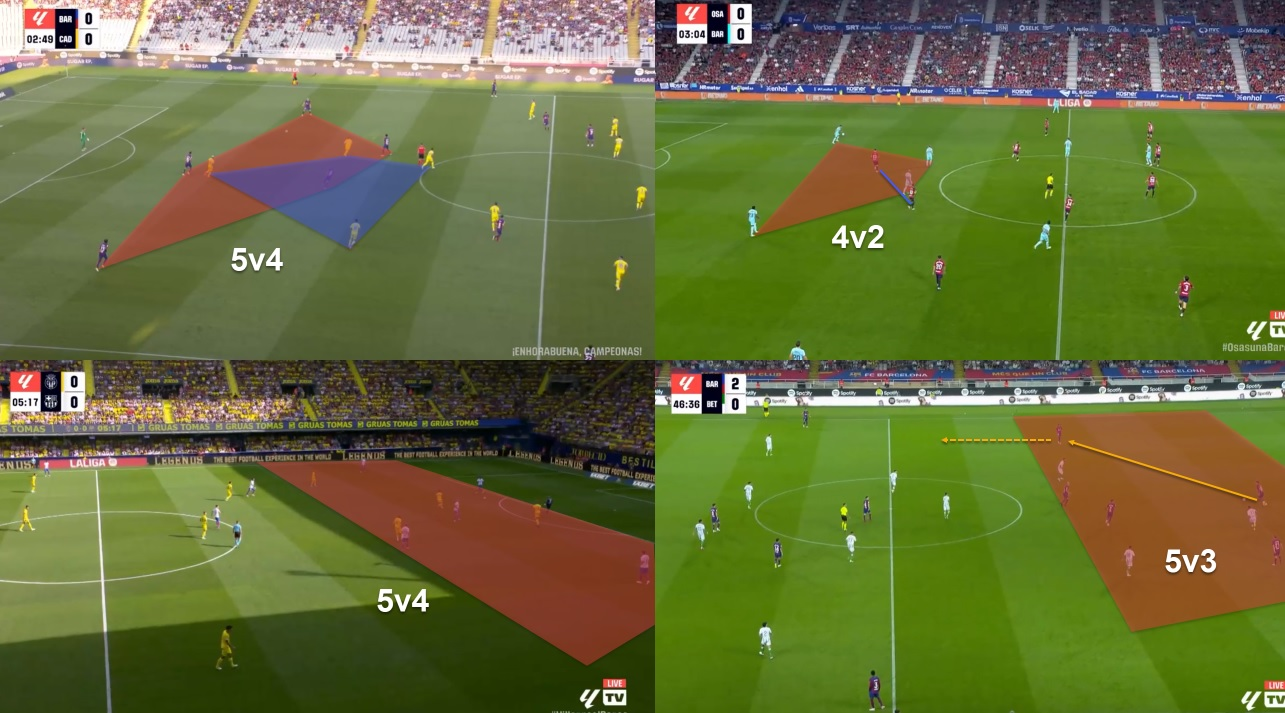
The first phase of Barcelona's build-up is crucial to the overall tactical identity of the team; how the team sets up in the first phase can tell you a lot about their overall quality. Take a team like Brighton as a great example of that - they are lauded for their overwhelming technical and tactical prowess in the build-up and that's their bread and butter; the knife that cuts through the opposition and sets the stage for their positional dominance.
Xavi's Barcelona, while not necessarily at that same level of build-up efficiency just yet, are still similar to Roberto De Zerbi's men in that regard; they are a team with a stable and consistent build-up phase. The +1 rule is the first step in that process; Barcelona will try and establish numerical superiority in the first line by any means necessary, as you can see above. Sometimes, it will only be a +1 and sometimes a +2; these things can vary. What doesn't change, however, is that Xavi insists on numerical superiority.
We have seen this in every game of the current season so far and we'll likely keep seeing it in the future too. This +1 principle enables them to eject the free player from the backline and into the second phase of the game, which is the second non-negotiable that will remain important moving forward.
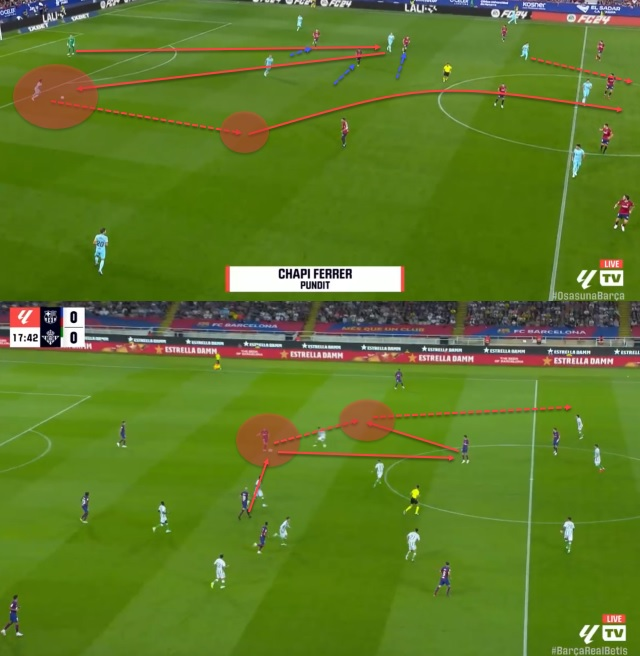
Numerical superiority enables Barcelona to identify and access the free man in the backline and send them forward with the ball. Having Cancelo as the right-back significantly boosts this aspect for several reasons. Firstly, he is the type of player to create a back three in possession, stay deeper and then progress play. Secondly, his technical superiority means he is comfortable on the ball and can be used to create that +1 while being an active participant in bypassing the press.
But his command of the right-back spot also means Kounde can now play as the centre-back, meaning he will often be the one tasked with that progression from the first line. You can see him do exactly that in the first image above; Barcelona attract the opposition to the left, freeing the right and then, using numerical superiority, enable Kounde to freely step forward and distribute the ball. Kounde himself is the perfect profile for the job; his right-footed diagonals and short-to-mid-range link-up are excellent and he also carries the ball well. In essence, he is much better suited for the role than someone like Araujo.
Having him as the main cog in the build-up phase alongside Cancelo will improve this part of Xavi's non-negotiable tactics immensely.
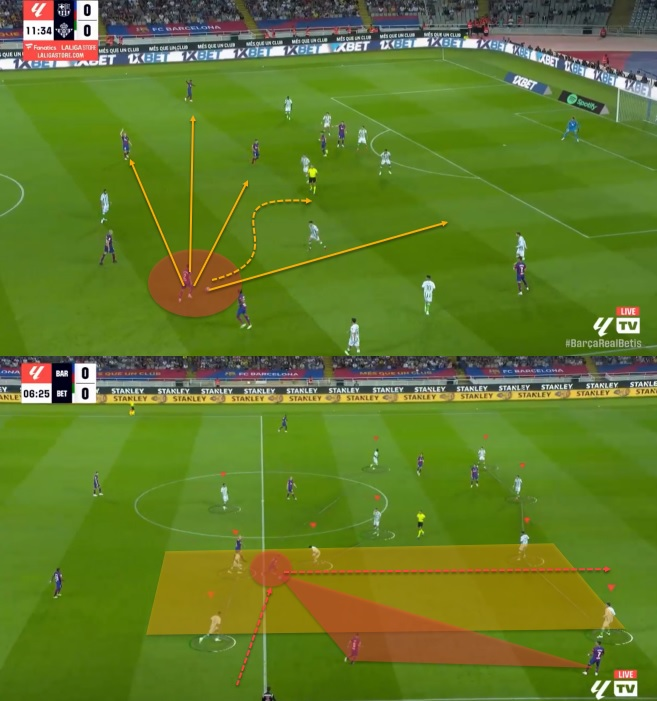
Cancelo can ensure numerical superiority not only in the backline but also when inverting into midfield. From there, and from deep, he can then receive the ball and progress play either through carrying or passing into the higher zones of the pitch. Simply put, he enhances every phase of Barcelona's play and influences the build-up stability, progression and creation. If you were wondering why Xavi was so adamant on getting Cancelo from Manchester City, now you have your answer.
Inigo is another interesting player and his profile fits the narrative; he is a left-footed centre-back who's very assured on the ball and has a calm leadership aura you need for the backline. He's experienced and reliable while also fitting Xavi's tactical ideas and the non-negotiables we mentioned earlier in the analysis. Inigo may not play all the time but when he does, we can expect it to be at the required level.
The midfield
Before we move on to the midfield portion of our tactical analysis, it's important to note that all phases are inherently connected; what happens in the first phase impacts the second and what happens in the second subsequently translates to the third. But still, the arrivals of both Romeu and Gundogan have had a big impact on Barcelona's style of play and their overall efficiency and that will no doubt continue to be the case throughout the season.
So let's start with the former player. Romeu is the type of footballer whose impact is not always seen but is definitely felt; just like Sergio Busquets, the less you notice him, the better job he's doing. Oriol ensures the flashy actions can happen elsewhere; that's the crux of his role.
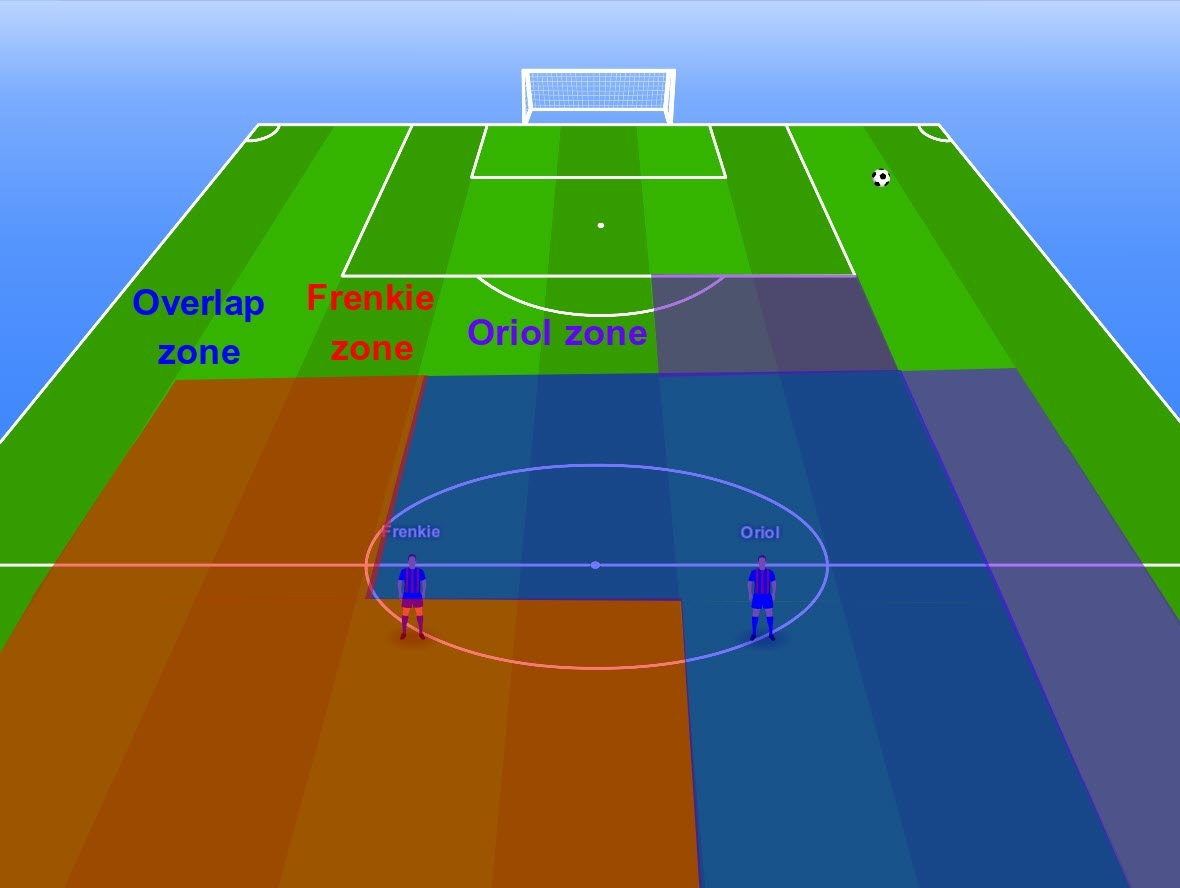
And nowhere is it more visible than in his relationship with Frenkie. Romeu and De Jong complement each other almost perfectly because each has tools the other lacks. Above, you can see a grid representing both players' approximate zones of influence. Naturally, Frenkie is everywhere; he's the type of player whose ZOI is huge as he affects every phase of play. Oriol, on the other hand, is in charge of a comparatively smaller zone but that doesn't mean his task is less important. On the contrary, his task is to enable Frenkie to be Frenkie.
So how does this newfound dynamic work and why does it affect the first phase so much too? In such a structure, Frenkie has the freedom to drop into the backline and often be the first receiver, shouldering the brunt of the first phase progression and retention. The Dutchman virtually has total control of the build-up phase, roaming and registering touches across the park, should Xavi deem it necessary.
This, of course, restricts Romeu's responsibility but also plays well to the limits of his profile. Oriol is an anchor; restrained, perhaps, but also disciplined, reliable and steady. Frenkie on the other hand, is a dynamo; the complete opposite of his counterpart. In the grand scheme of things, his role is still that of a 'secondary' controller but evading pressure, progressing the ball and breaking opposition lines is what he does best. Especially now with Romeu by his side.
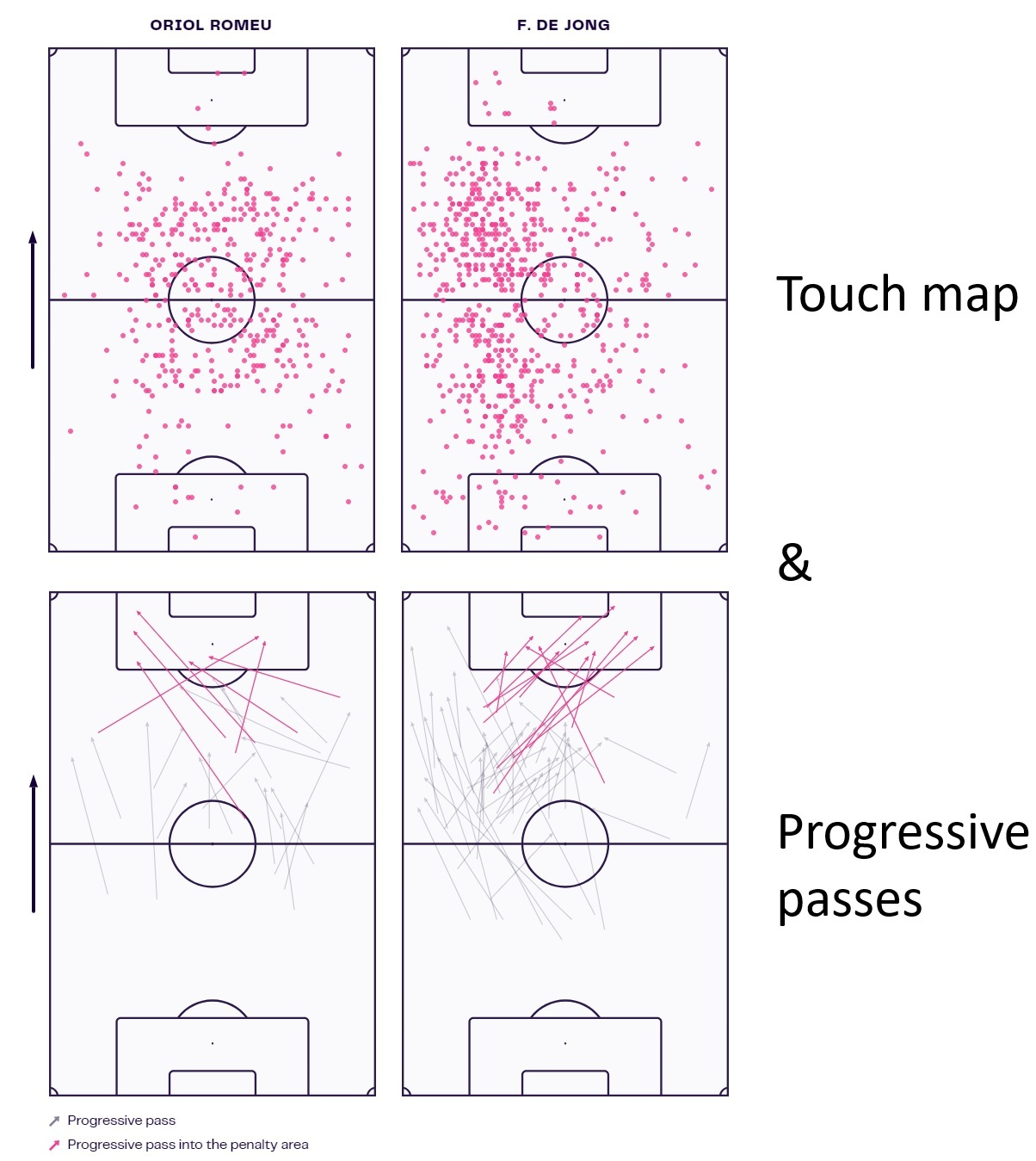
You can see it in the maps above. Frenkie is the volume player; he records more touches and more passes, is more progressive and is far more free. Romeu is the stabilisator; he keeps the possession ticking by keeping it simple, retains and recycles and is more restricted in his movement. By comparison, Frenkie drops deeper than Romeu but also ventures higher than him. In that sense, Frenkie is the more vertical presence while Romeu is the more horizontal one.
But a double pivot is also a part of a grander scheme of things; namely the box midfield. Usually, Xavi would form his variant of the box by inverting the left-winger and that is largely still the case. However, with the arrival of Cancelo, that could also change. The Portuguese full-back is essentially an interior masquerading as a right-back; his true nature lies in the more central channels. Often, we'll see him invert and he already has done so in his first start of the season against Real Betis.
And his inversion into midfield also created a box. Only this time, Barcelona retained the box while also keeping Frenkie outside of it, enabling him the freedom to roam and be vertical without breaking the central compactness or the structure that provides overloads.
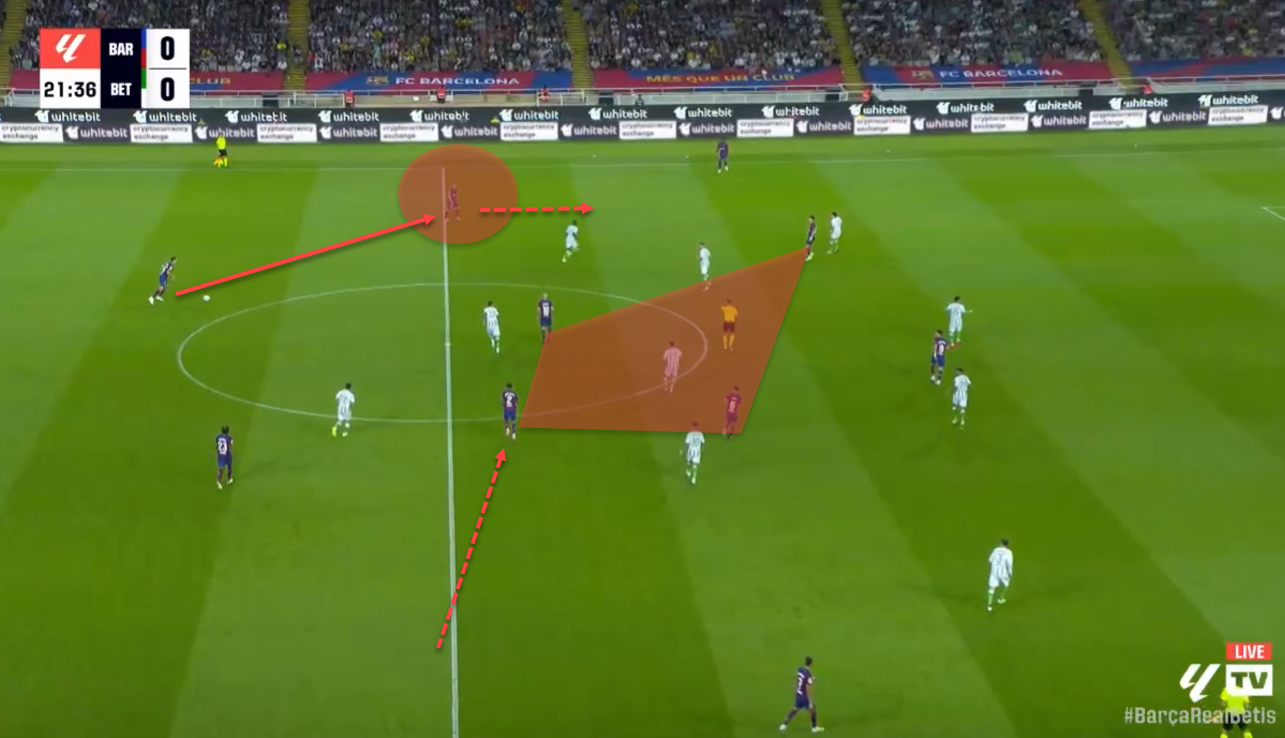
This is also a clear example of players from other positions influencing the midfield. Cancelo, a defender, inverts to allow Frenkie more freedom and Felix, an attacker, does the same, ensuring Frenkie can focus on the first two phases and be less needed in the third phase. I talked about this in one of the earlier analyses on the blog; Frenkie is given the freedom to influence every phase of the game but it often comes at the cost of preserving the structure.
A way to avoid that would be to limit him slightly but also ensure others take up the responsibility and can provide enough of an output to justify that limitation. Essentially, Frenkie should be the first and second phase dictator while the third phase is the responsibility of the forwards and the advanced interiors like Pedri and Gundogan.
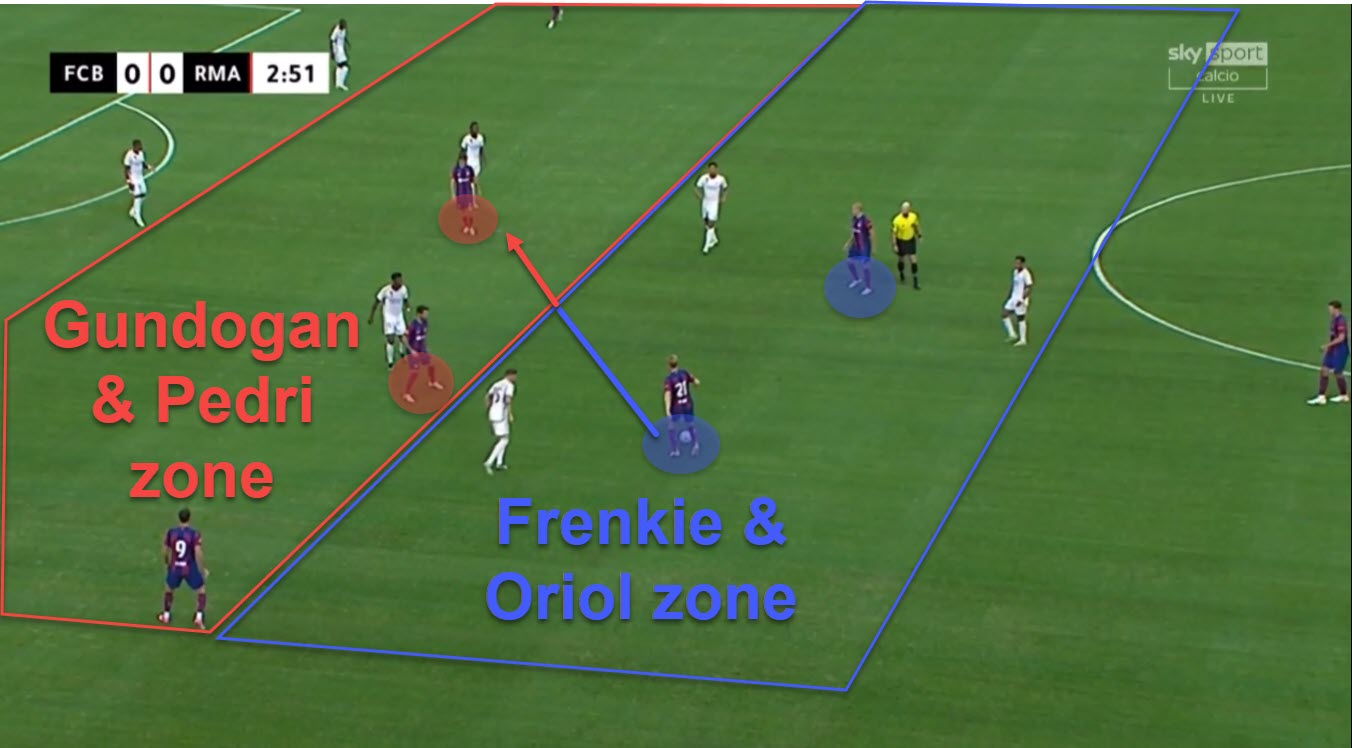
With the addition of Gundogan in a much more offensive role, Frenkie doesn't need to be everywhere and do everything. Of course, he still can; he's simply that good. But there is no need. Or rather, there shouldn't be a need for it. Apart from Gundogan, Pedri is the other obvious candidate to be given the keys to the advanced areas of the pitch but Pedri is someone who will also inevitably be involved in everything Barcelona do.
This is where players like Felix come into play. He will often cut inside and complete the box but he will also take care of the creative part of the higher zones. All of that means less responsibility for Frenkie but also more balance for the team. Speaking of the balance, this is something Xavi needs to rectify too.
With the box midfield in its usual iteration, one of the midfielders was often cut off from the rest of the team. This wasn't inherently a box midfield problem but also a problem with the insistence on the overload-to-isolate tactic. In such a setup, the midfielder occupying the underloaded side would often be used in a very supportive role.
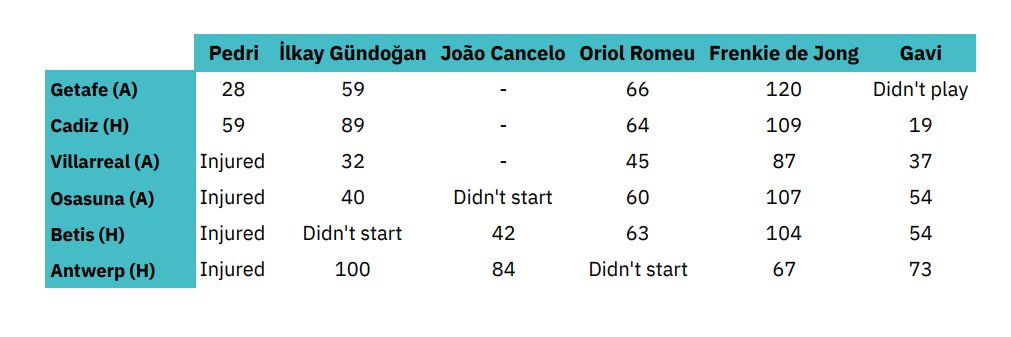
This table was made by @TarekNacFCB and it shows us Barcelona's midfielders' completed passes in the five domestic games they've played so far this season. In the first four games, Xavi used four midfielders to form the box while in the fifth and the sixth, against Real Betis and Antwerp respectively, we saw three midfielders and Felix on the pitch.
If we look at the numbers for each of the first four games, we'll notice there's always one midfielder who's less involved than the rest. Pedri vs. Getafe, Gavi vs. Cadiz, Gundogan vs. Villarreal and Gundogan vs. Osasuna all had the least touches of all midfielders. And what else do they have in common? In all of those games, they played on the underloaded or isolated side of the pitch. Just for reference sake, Felix, who played in that left-winger/left-midfielder role vs. Betis had only 30 touches.
While he is still a player who wants the ball at all times, that role doesn't require him to be a volume passer at all; instead, he is there to give Barcelona the necessary output and support the striker. To give any of the other midfielders such a role would feel like a waste of their talents.
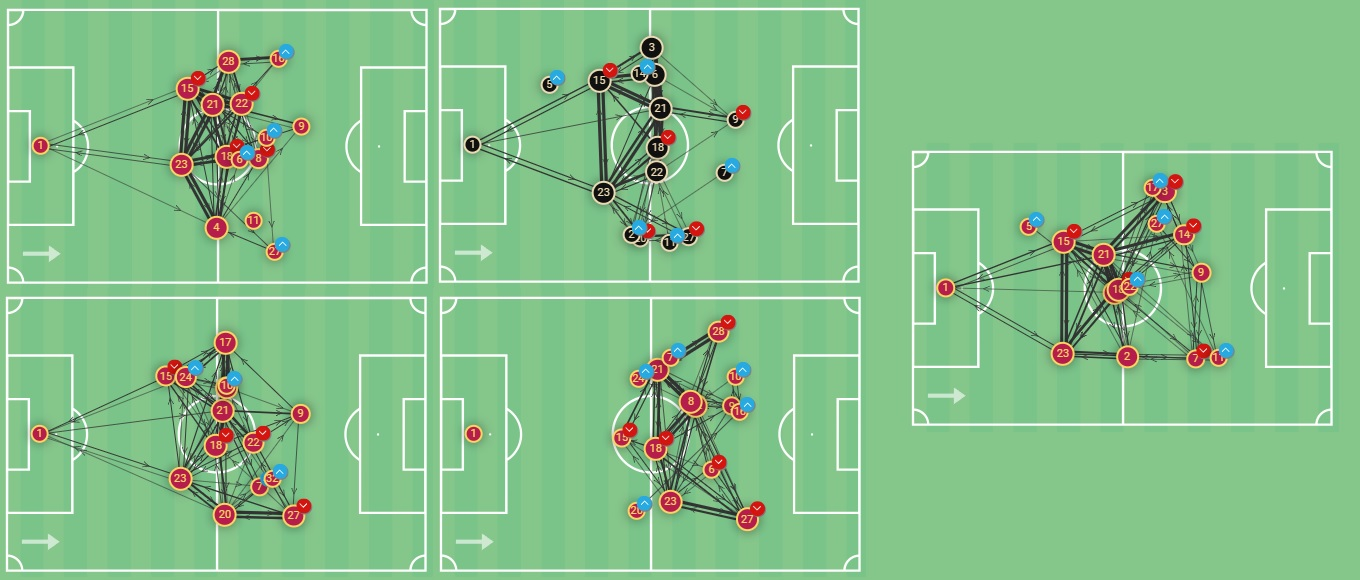
Of course, Felix is also a player who warrants more touches with the ball but is a forward first and foremost. His primary role and contribution lie away from control, retention or even progression to a certain extent even though he can perform all of those quite well. The pass maps above, however, help illustrate that disconnect in the team.
In the first four games, there was always (at least) one player completely cut off from the team and more often than not, it was the fourth midfielder on the underloaded side. With the introduction of this new iteration of the box completed by Cancelo and Felix with Frenkie outside of it, the responsibility is more equally shared and thus the system is more balanced, as is also shown in the numbers in the table above.
In theory, this could be a way to balance the midfield and step away from the four midfielders formula while retaining a variation of the box system. But that also means someone will need to be benched. And that decision ultimately lies with Xavi.
The attack
The final piece of the jigsaw is the forward line. And just like defence and midfield lines, the attack has already received a boost. Felix is the big arrival but we also have to include Gundogan and Lamine Yamal in this equation. The young LaMasia starlet is someone we'll discuss in depth sooner rather than later so I won't go into detail now. He may be a breakout player but he's technically not a new signing. And besides, he deserves his own analysis anyway.
So let's focus on Felix and Gundogan, starting with the former player. Joao Felix is a player of immense talent but also a player who's difficult to unlock, as evidenced by his several underwhelming seasons in the past couple of years. But his first outings as a Barcelona player show signs of hope.
His profile fits perfectly in that left-winger role that requires immense technical qualities but also an attacking foundation. Felix is a forward but a forward who likes to play deeper, be involved and influence almost every phase of the game. And the left-winger in Xavi's current box system plays very much like a midfielder. This fits Felix like a glove.
His presence in the final third means De Jong doesn't have to bear all the responsibility, it gives support to Lewandowski, it gels well with Alejandro Balde's overlapping runs and it maximises the runners on the opposite flank. Given Xavi's insistence on high interiors that penetrate the half-space, Felix should have ample targets to choose from with his creative passing from the left.
That's why the profile of the right winger is also paramount in this scenario. Felix needs outlets around him. For that reason, Ferran Torres at right-wing offers the fitting profile for that structure.
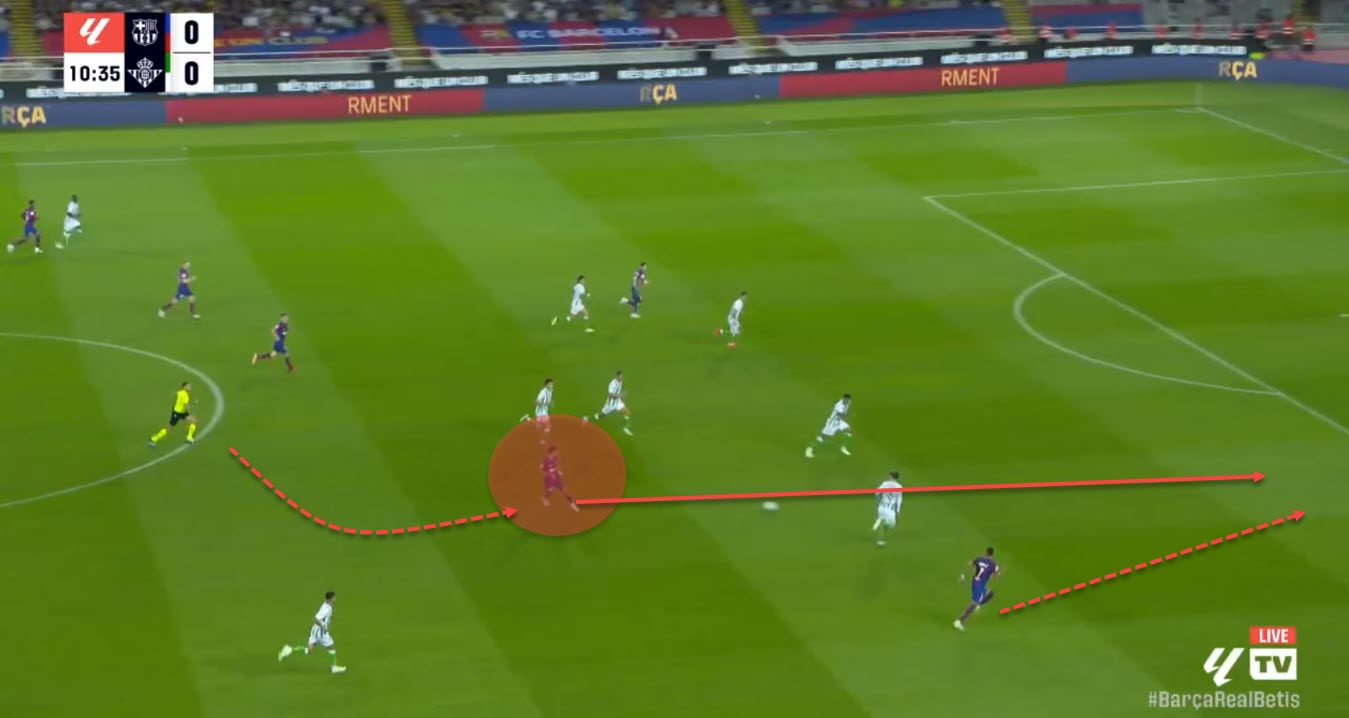
We saw this against Real Betis too; Felix is a roamer and while so far we haven't seen him in such a free role he's used to having, we saw glimpses of it. Above is a scenario which mixes his creative passing and carrying with an outlet on the right side of the pitch. This is the ideal structure for someone like Felix. But there's also more; he needs a robust centre-forward to play off of.
Lewandowski is a good example and the two gel well together. Felix's presence not only ensures the Pole is not isolated but it also gives him an additional creator to both bear the burden and create for him. On the other hand, Lewandowski's gravity and pinning ensure Felix has more space around him and isn't as tightly marked at all times.
Similarly, the Portuguese star is someone who will still invert into the midfield, link up and then burst back into the box to assume a more attacking position. This trait is key for his LW role but also if Xavi ever considers deploying him at false 9.
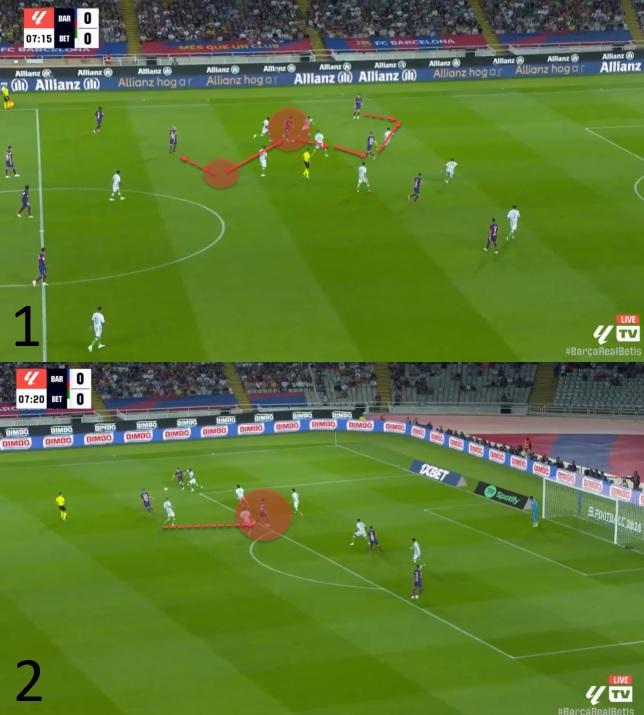
Gundogan offers something similar. He too is a player with a huge ZOI radius and one that practically affects every phase of play. There are several ways for Xavi to use him but each requires a sacrifice: if Gundogan plays deeper, you get to reap the benefits of having an elite controller. If he plays higher, you get to reap the benefits of having an elite forward. But picking one means you lose out on the other.
So what is the perfect role for the perfect midfielder? It's tough to say; he will perform wherever you put him and it's up to Xavi to decide what's more important in any given scenario and against a specific opponent.
It's quite interesting how Gundogan can affect the attacking structure, though. Xavi's left winger is also often a midfielder but a midfielder with a very offensive role. Even though the left side of the pitch is often the overloaded and more build-up-focused one, the left winger/midfielder's task is often to attack space and occupy the box. Gundogan can do this very well.
Of course, the caveat is that he's not as involved as he would like to be but it's not about the quantity of touches but their quality. If Gundogan sees less of the ball but still has a big impact whenever he gets it, it will still be worth it for Xavi and Barcelona.
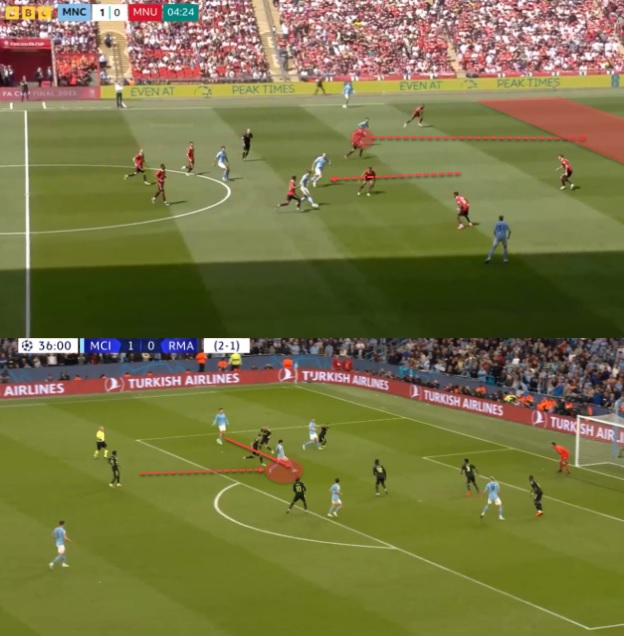
Naturally, there's much more to discuss here; Yamal, the overload-to-isolate tactic, Ferran's resurgence, Lewandowski's form and the arrival of Vitor Roque. But that's what makes this season so exciting; Xavi finally has options to choose from and almost all are good ones too.
The tides are shifting. Is it finally time for Xavi-ball to rise? Let's hope so.

